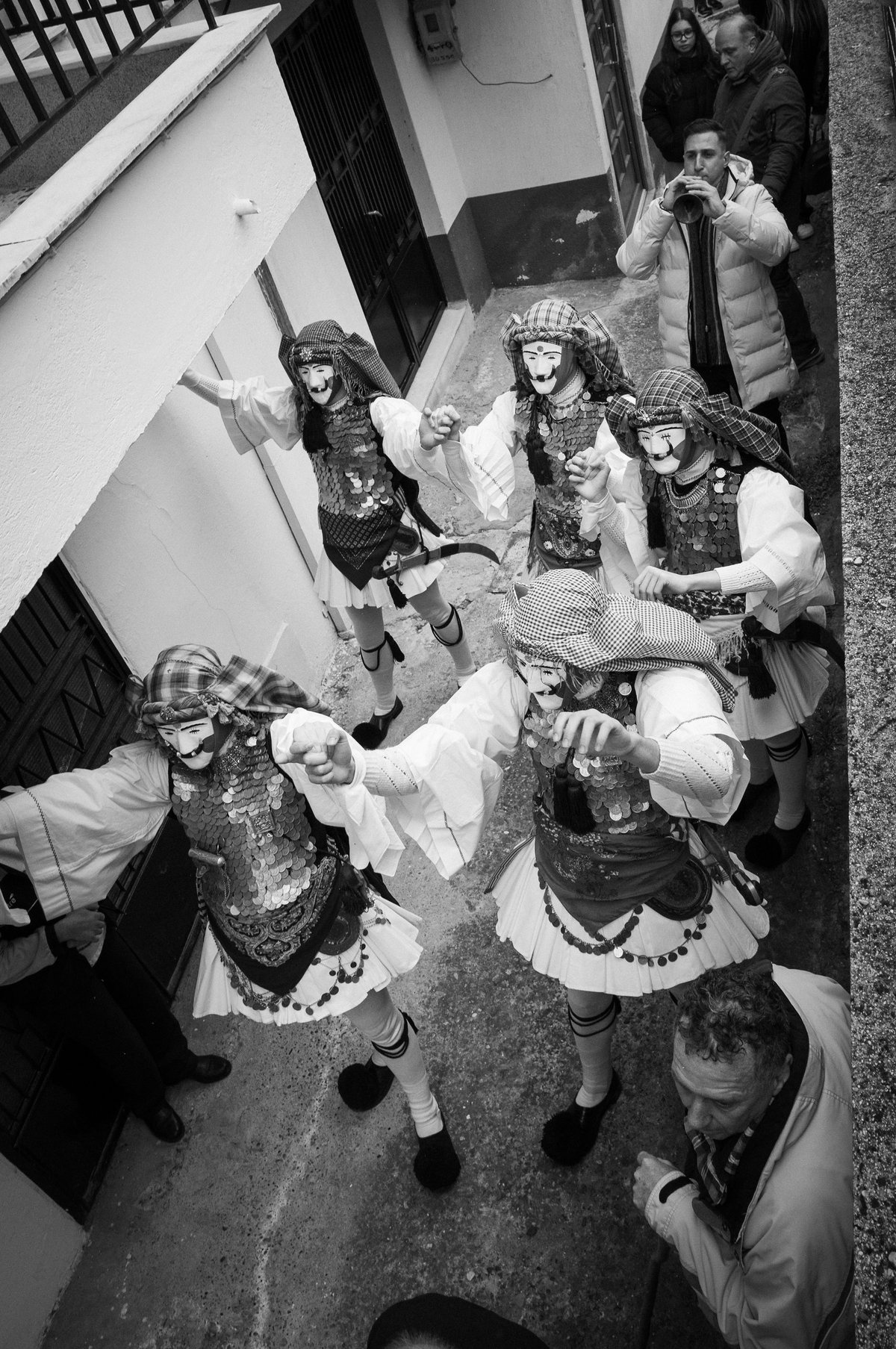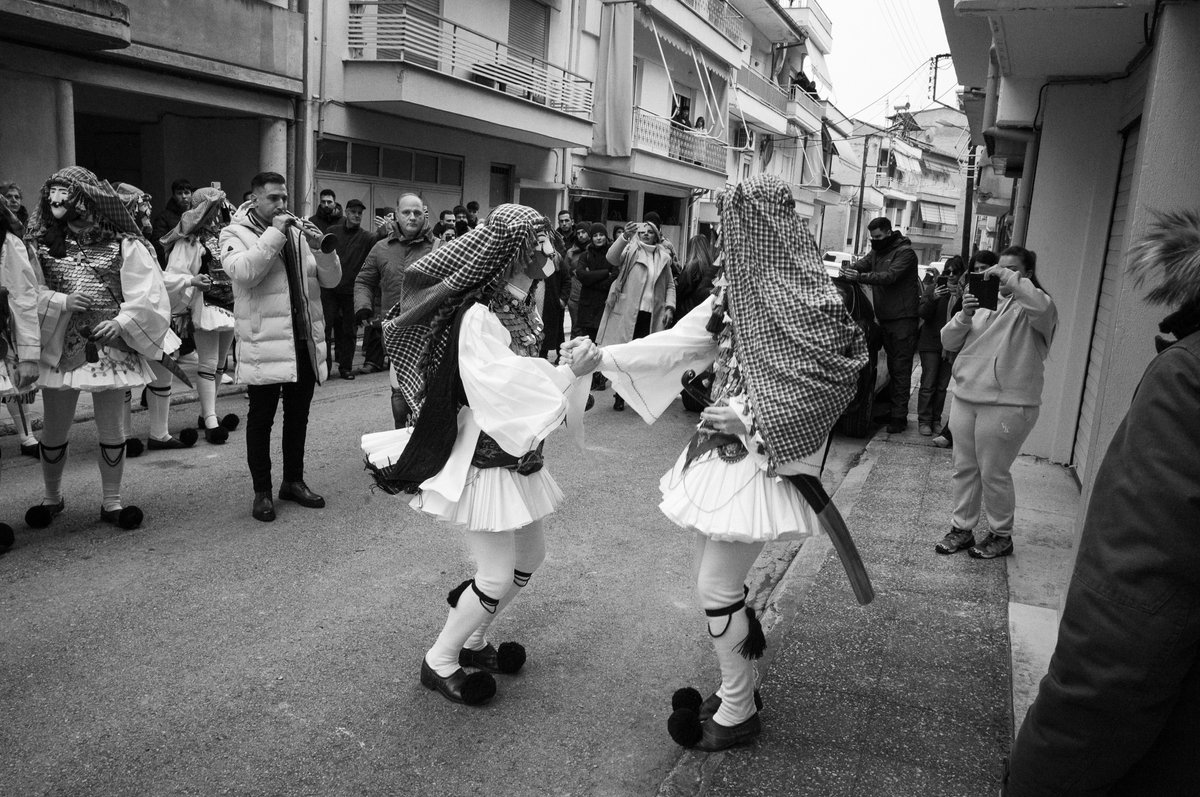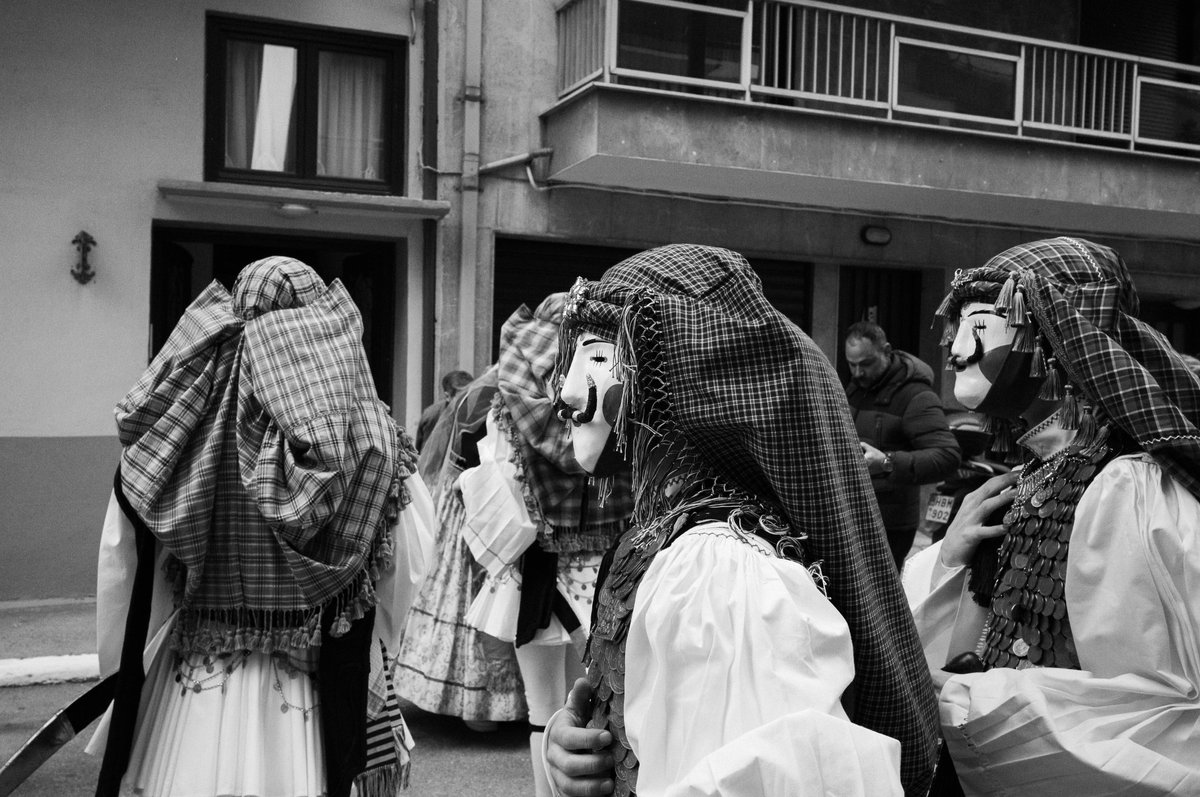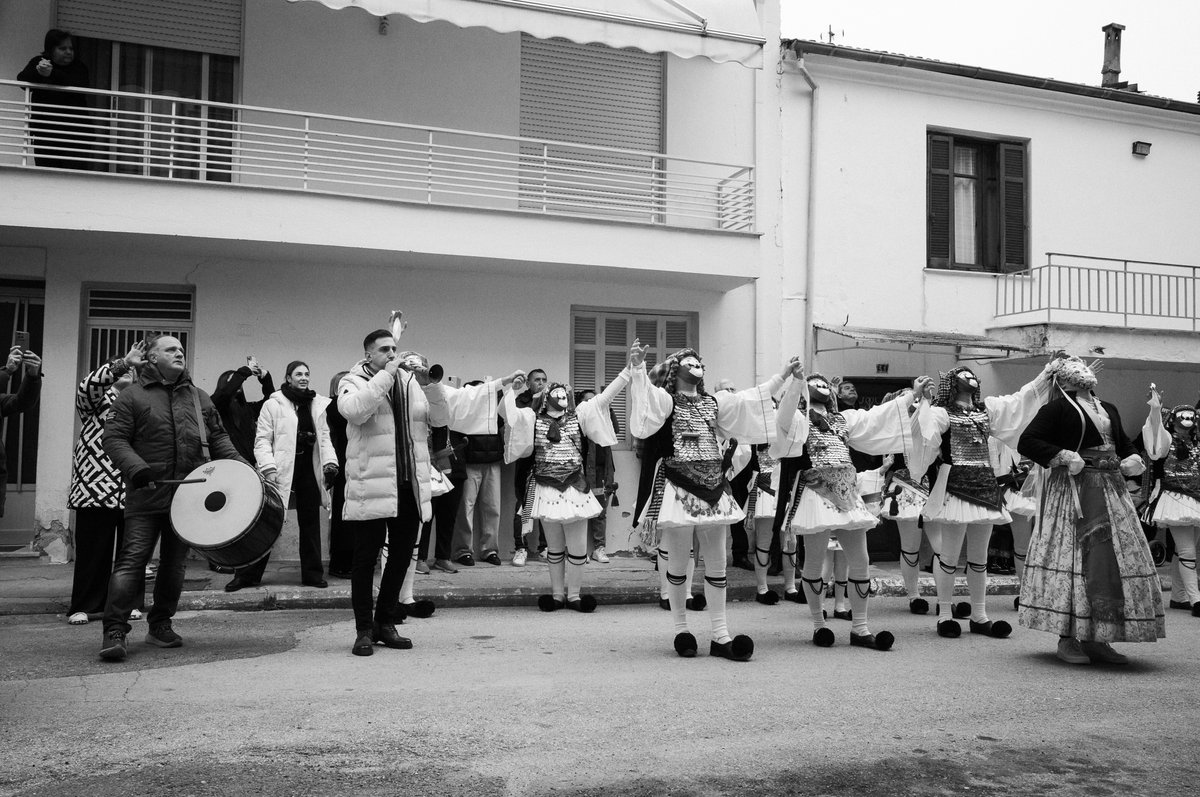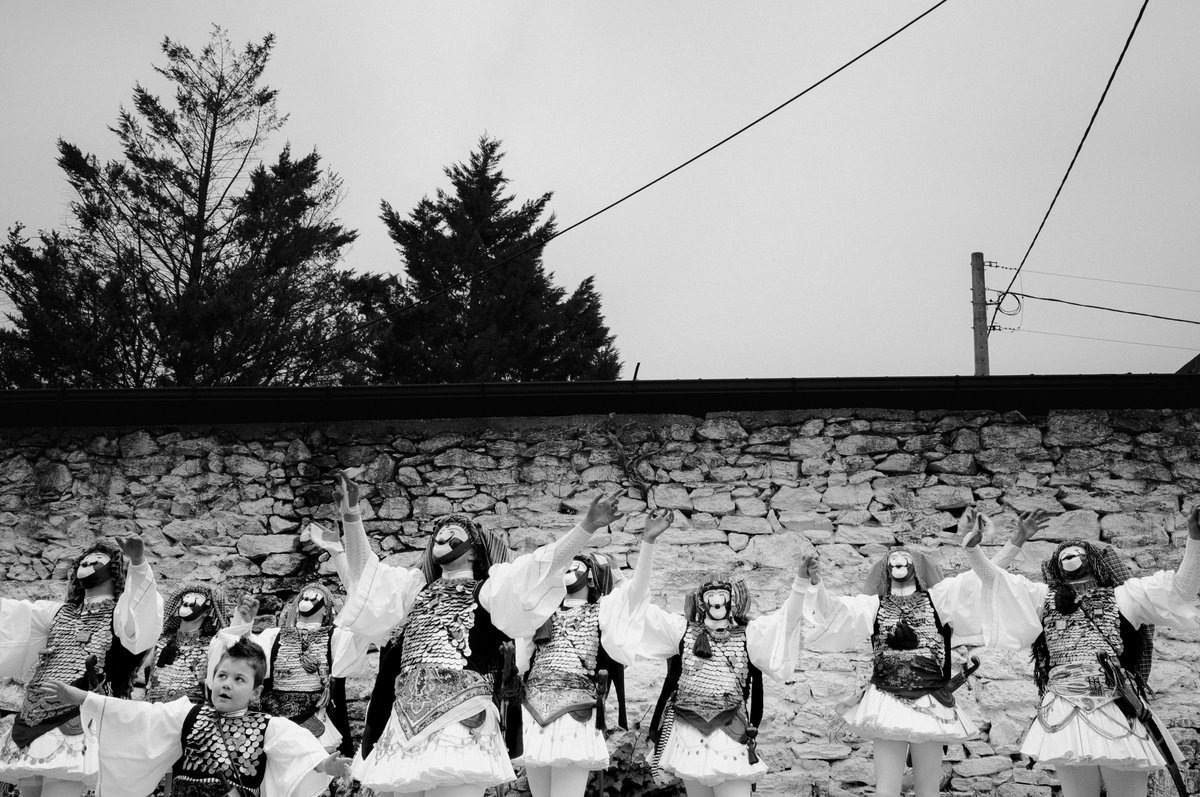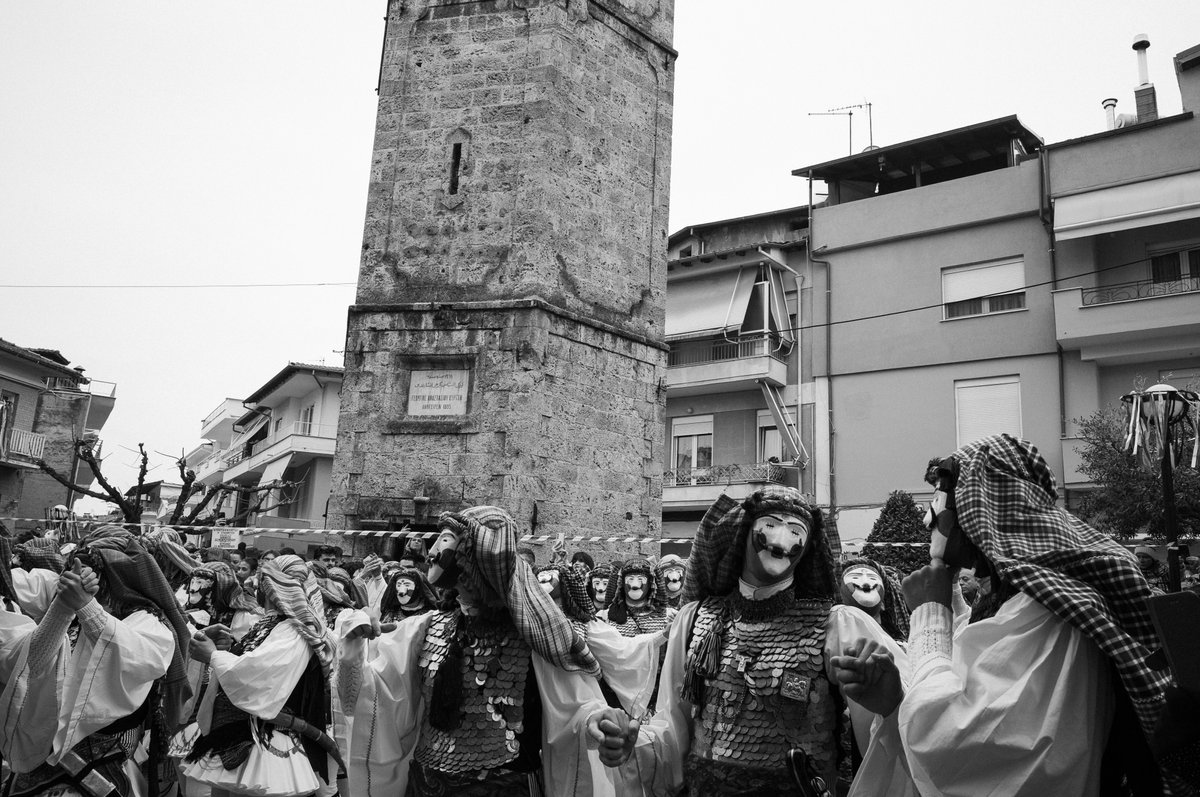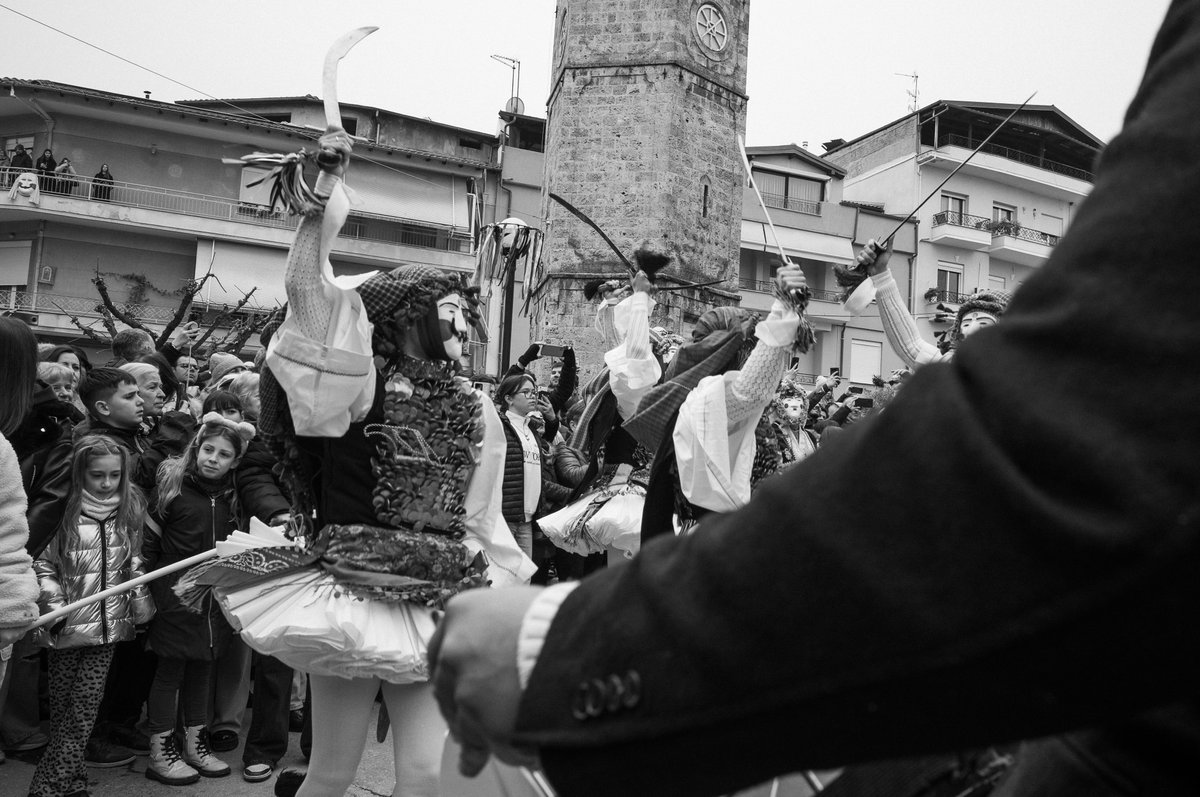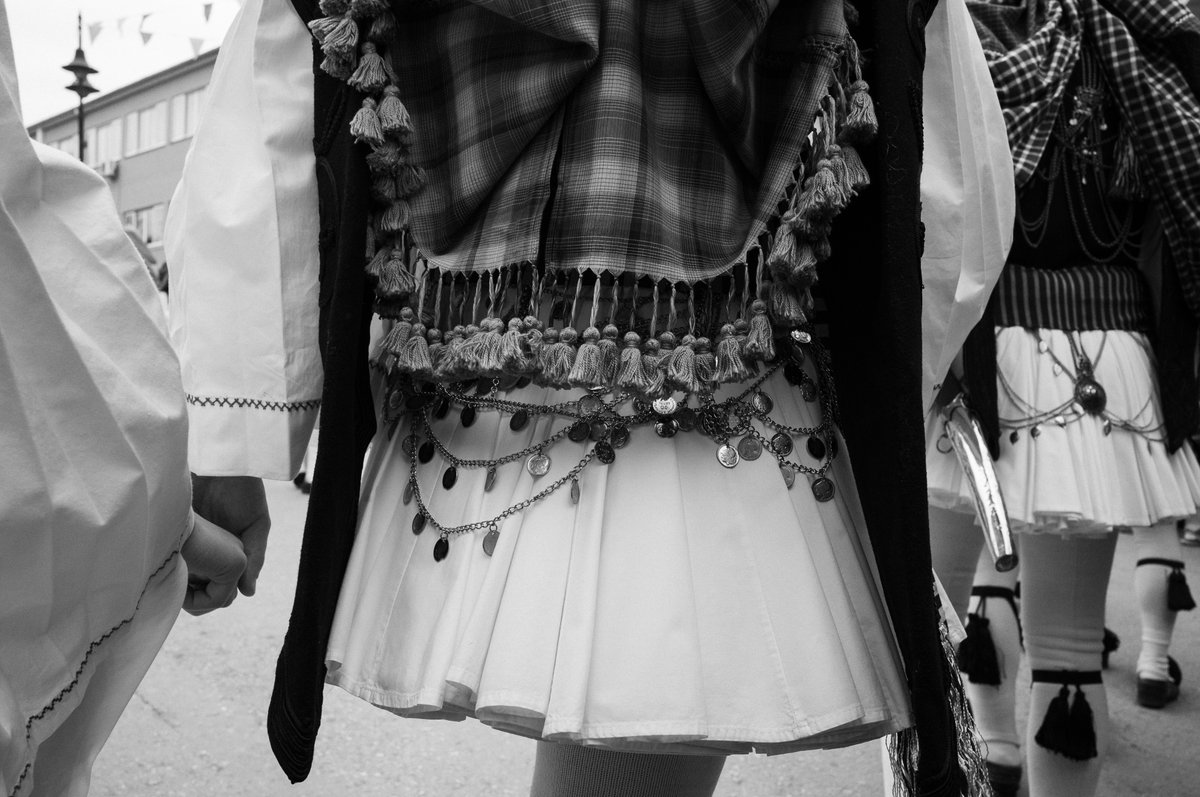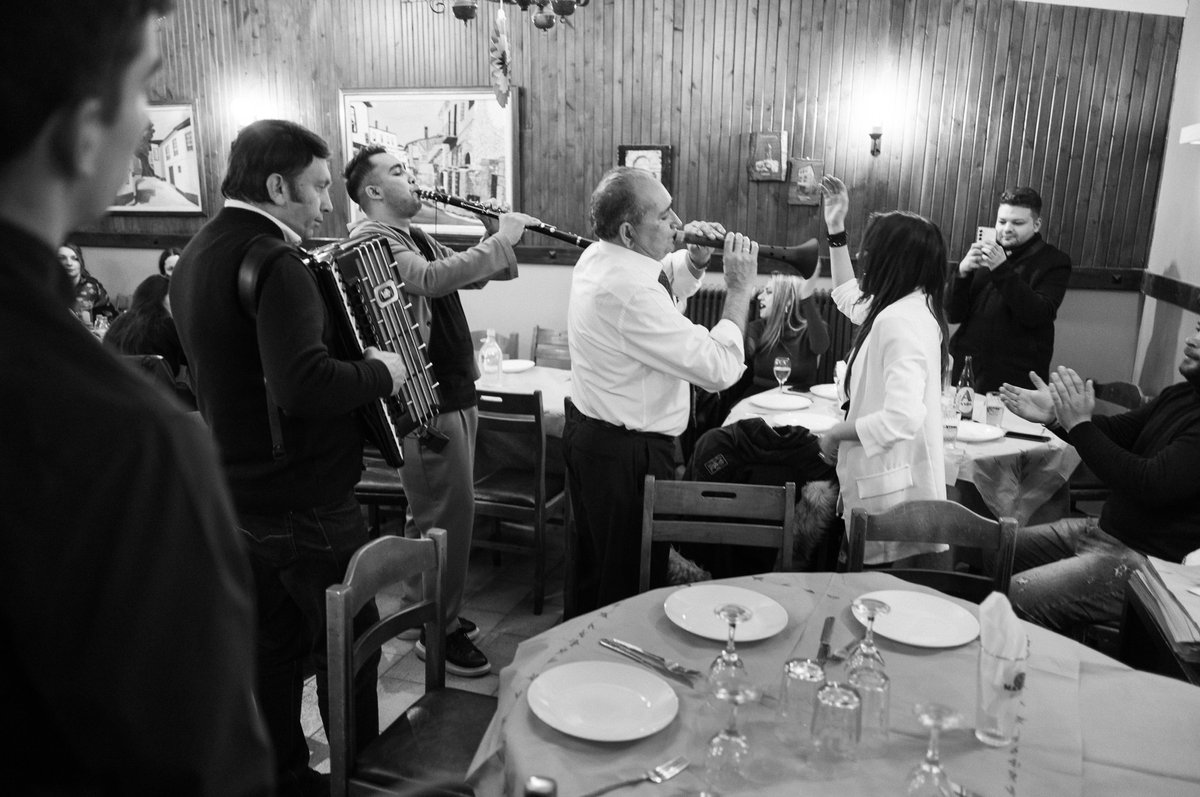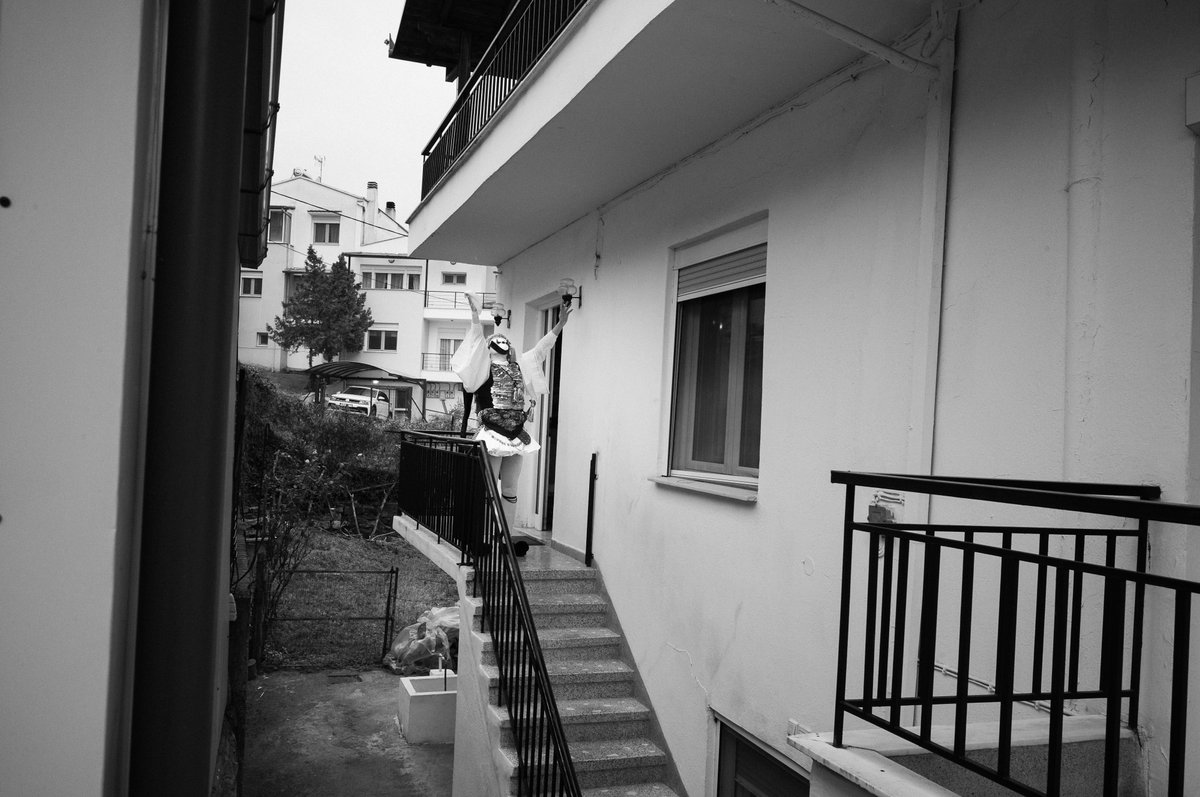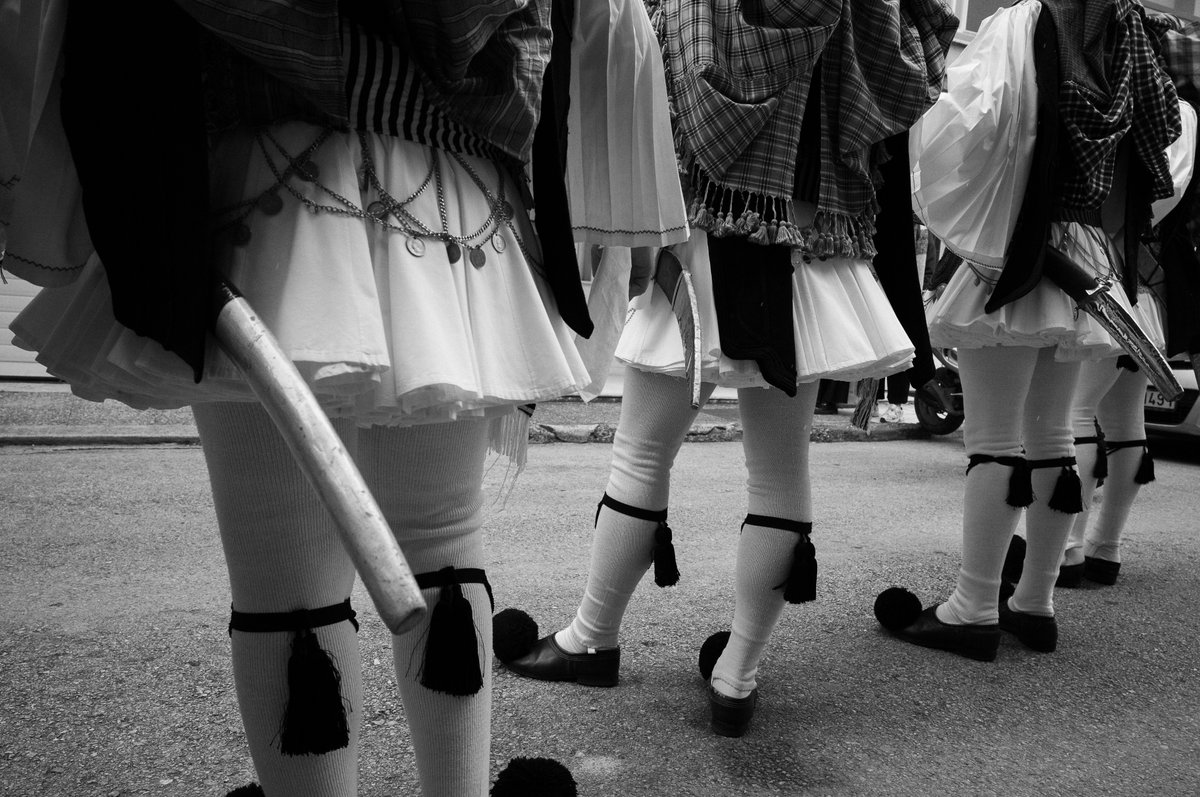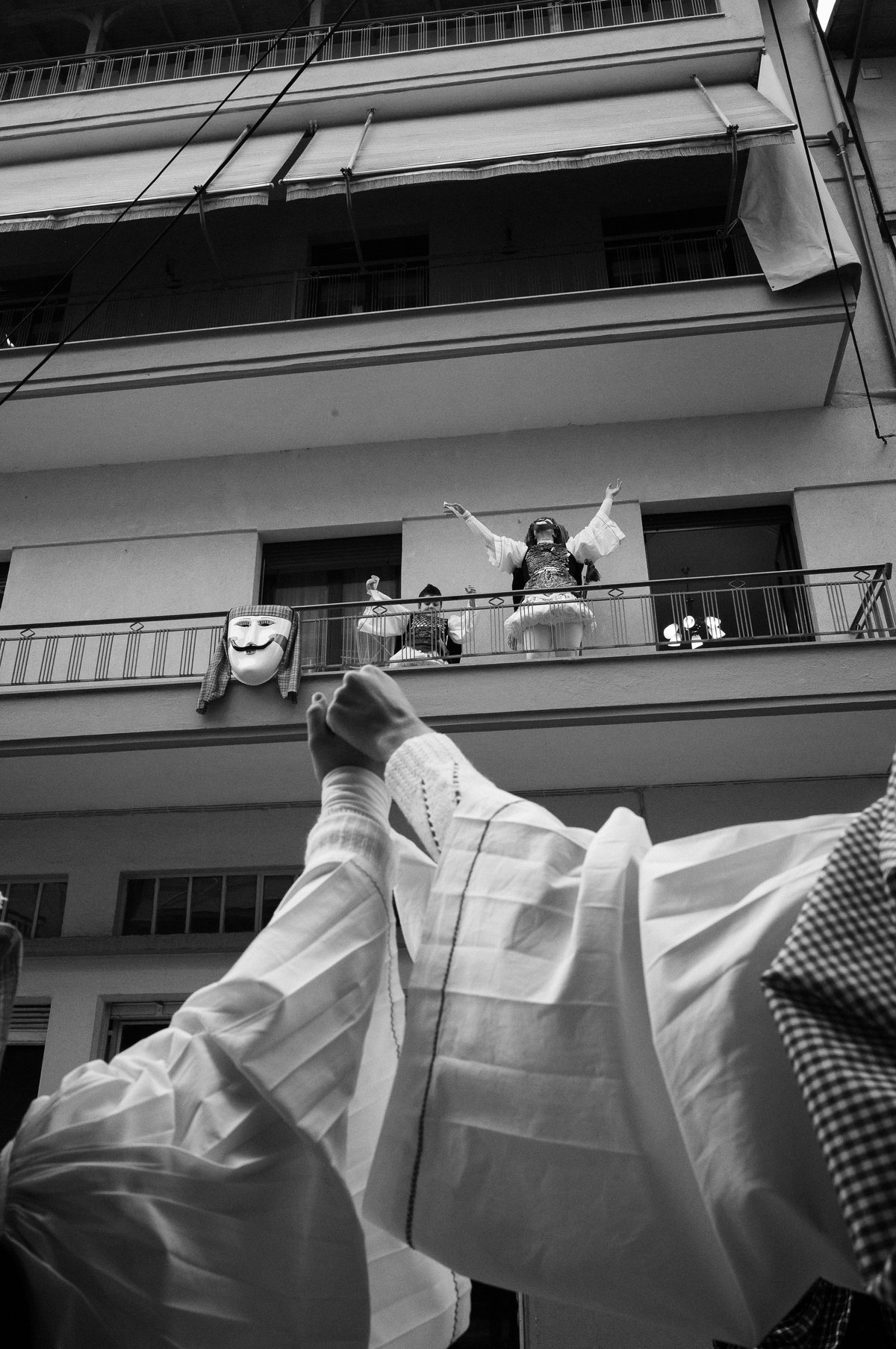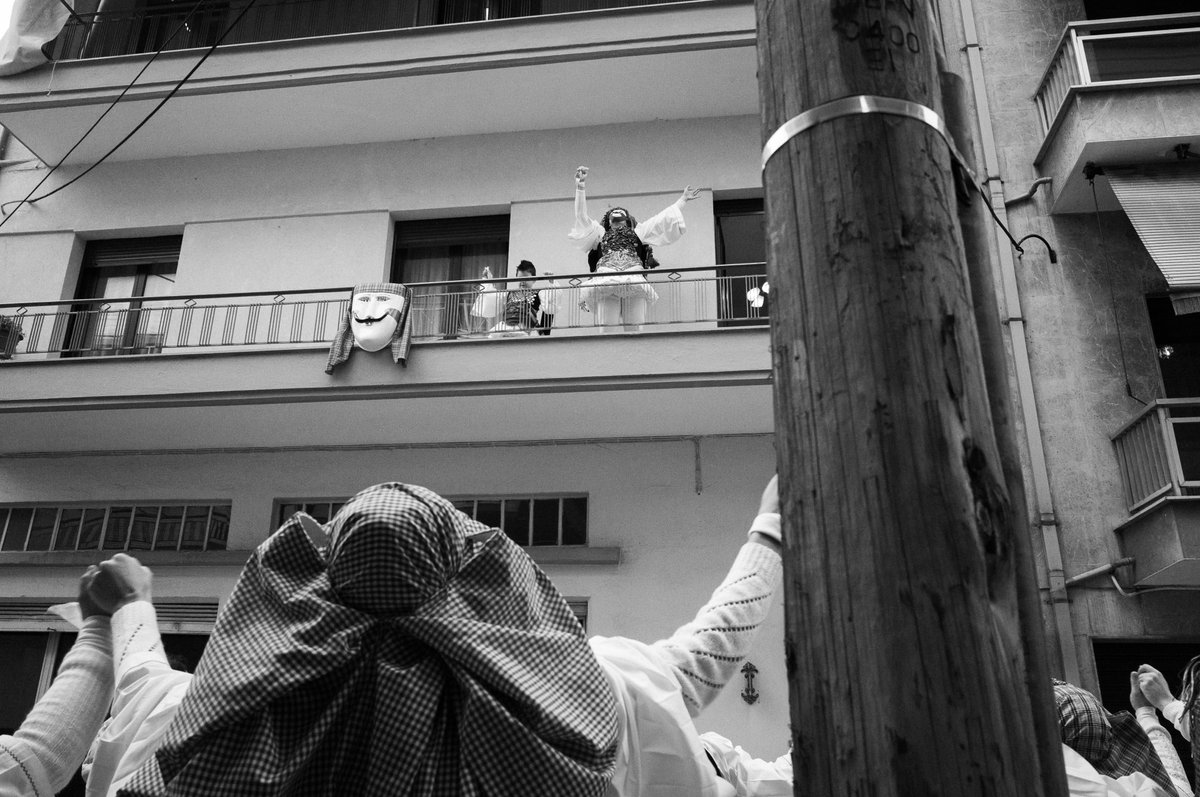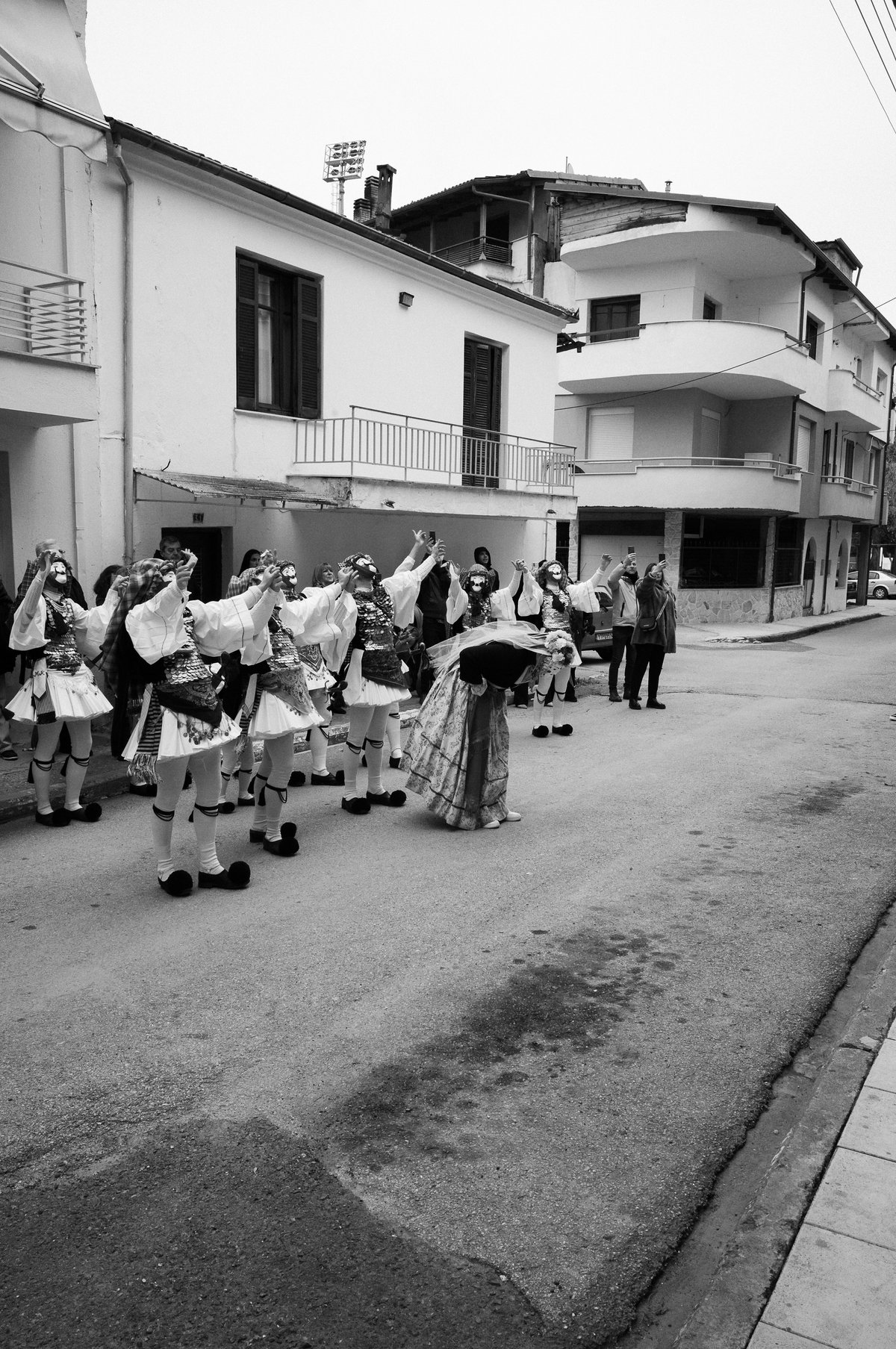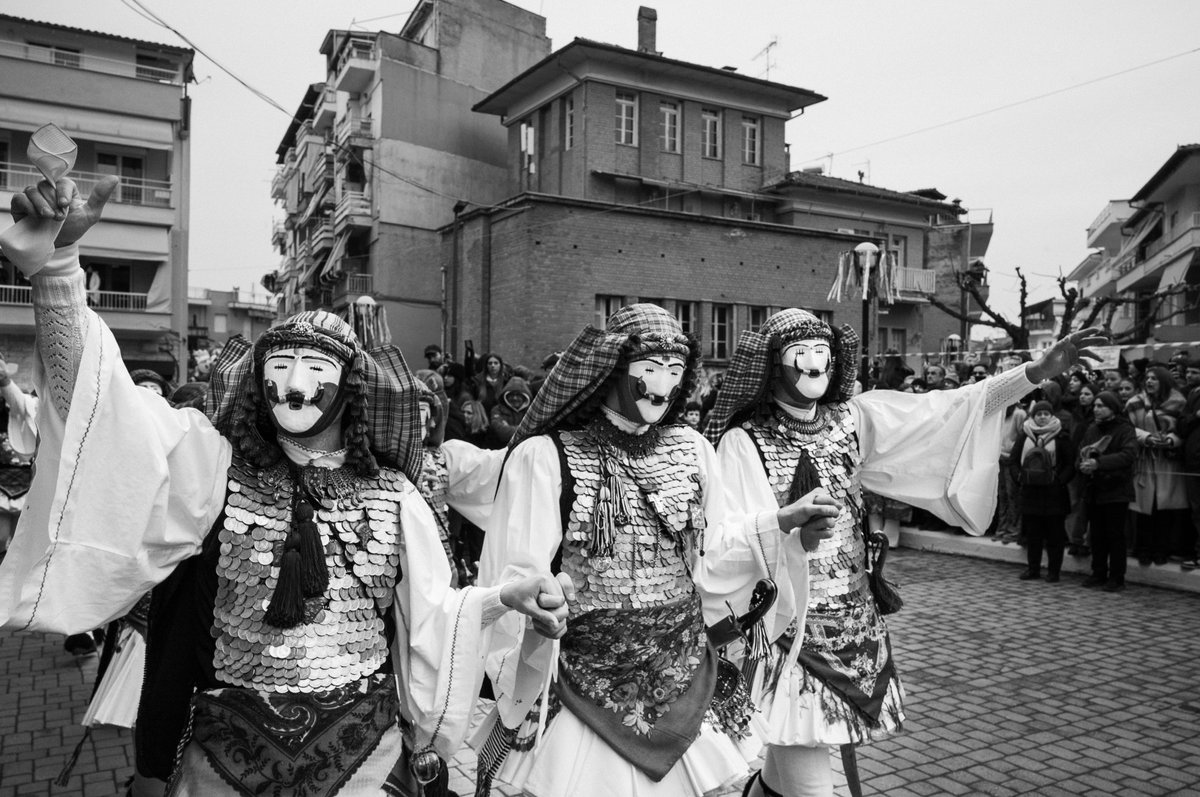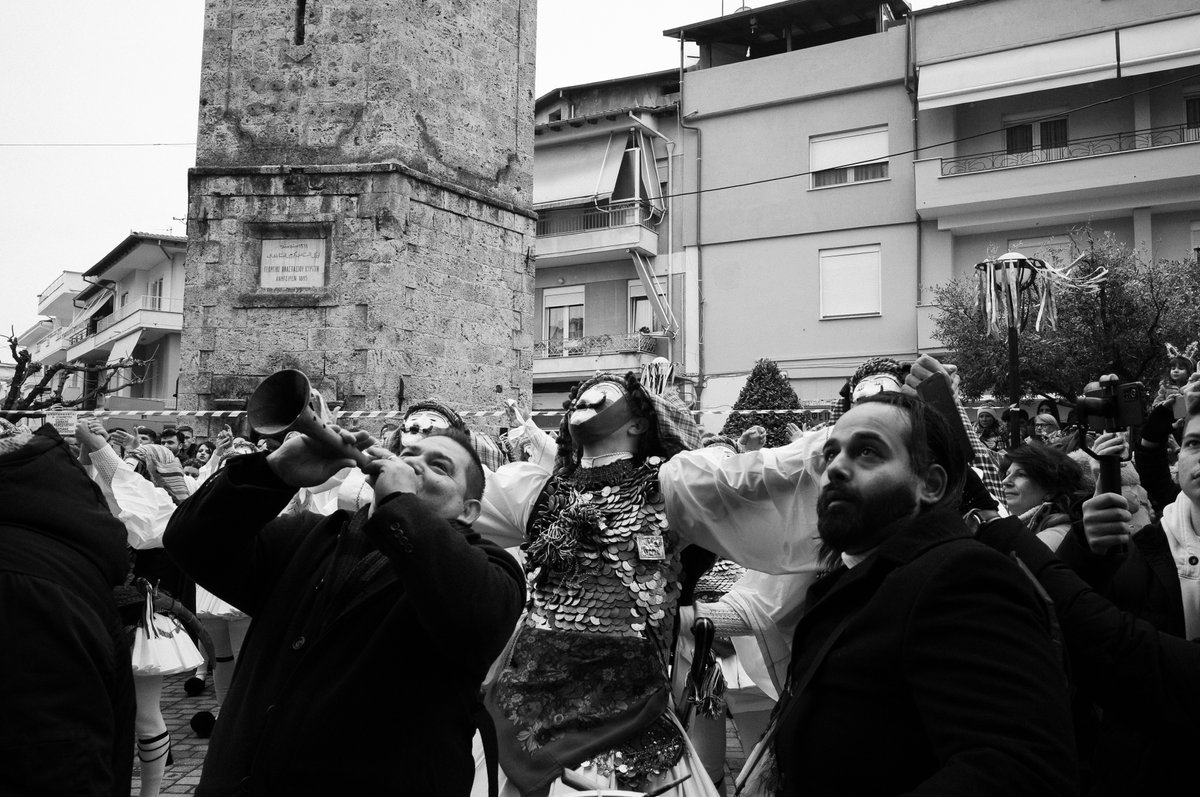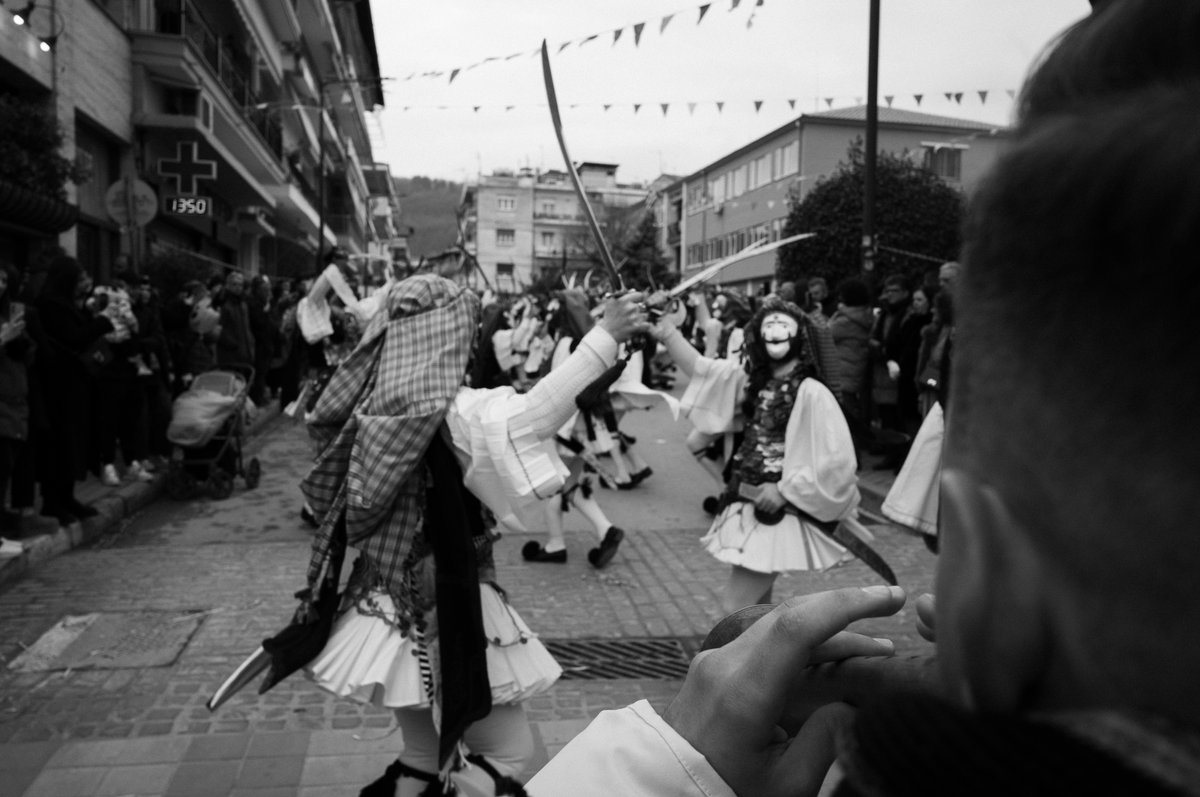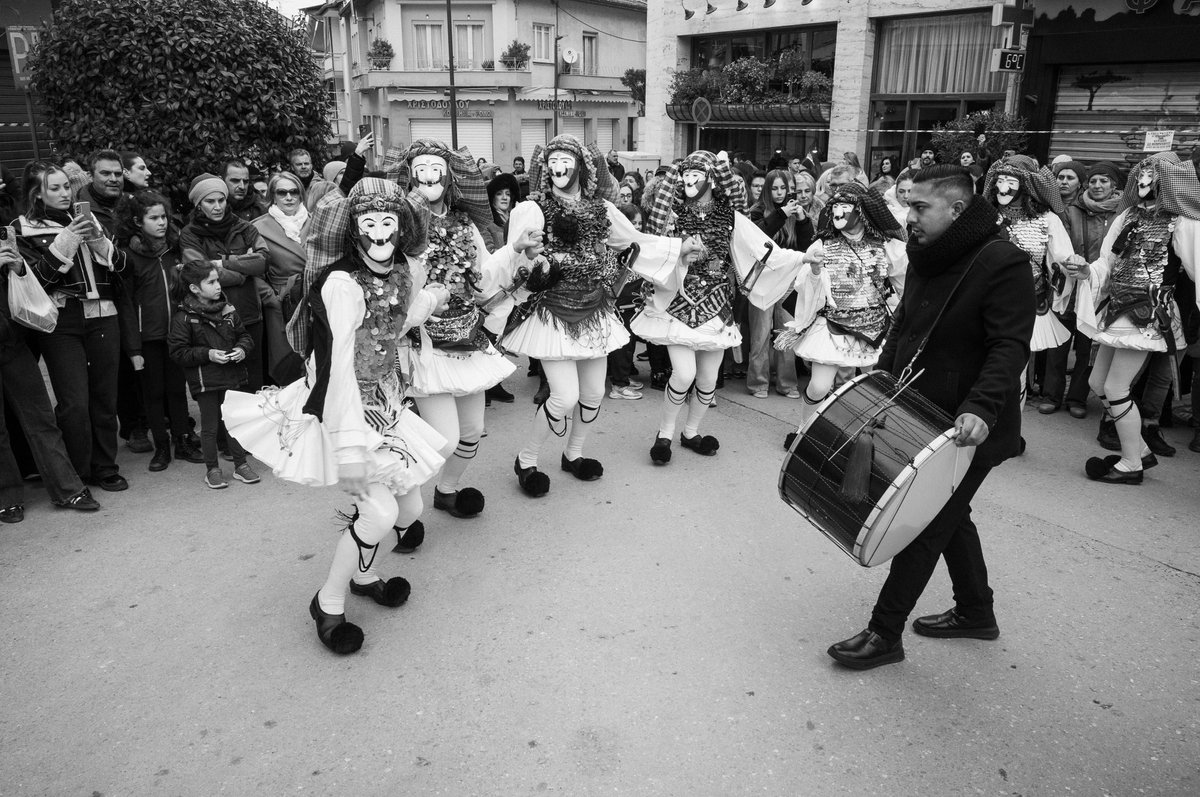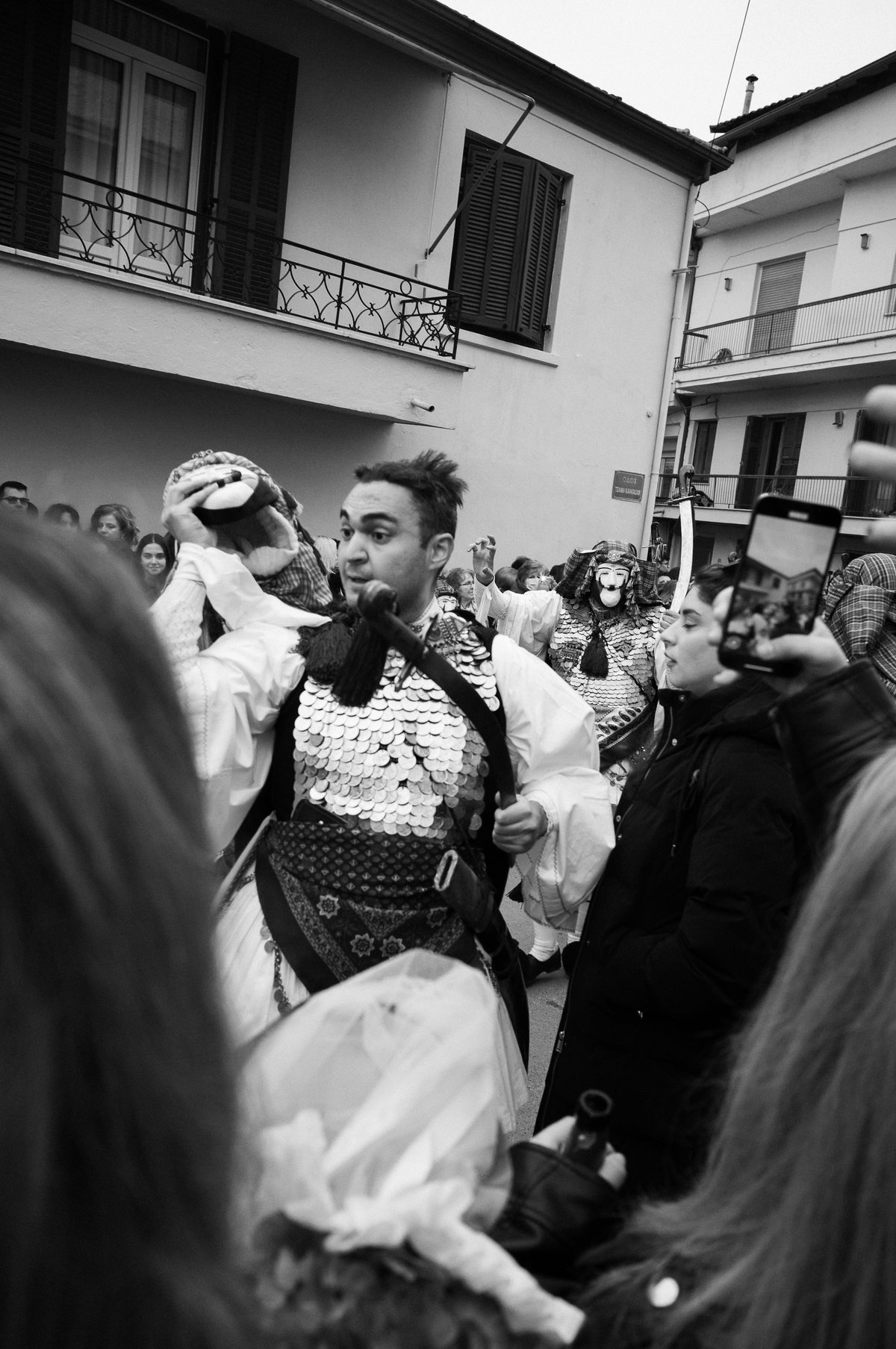
That crisp Sunday morning, a week before the bustle of Carnival, I found myself driving into Naousa with an eager anticipation. At 8 a.m., my companions and I left our car behind to begin the search for what the locals call the “mpoulouki”—a term that carries centuries of tradition and subtle mystery. In those early hours, as we joined the initial calls and gentle gatherings, the city seemed to be stirring from a long, silent sleep.
The Quiet Assembly and the Old Ways
Our journey began with a series of intimate visits to local households—a ritual known as the “kalésmata.” In each home, the young men, dressed in meticulous costumes and armed with a handful of treasured silver ornaments, were being called forth to join the mpoulouki. The process, almost dance-like in its cadence, followed unspoken rules passed down through generations. I was struck by the solemnity and warmth with which each participant embraced the ritual, as if stepping into a role that was both ancient and deeply personal.
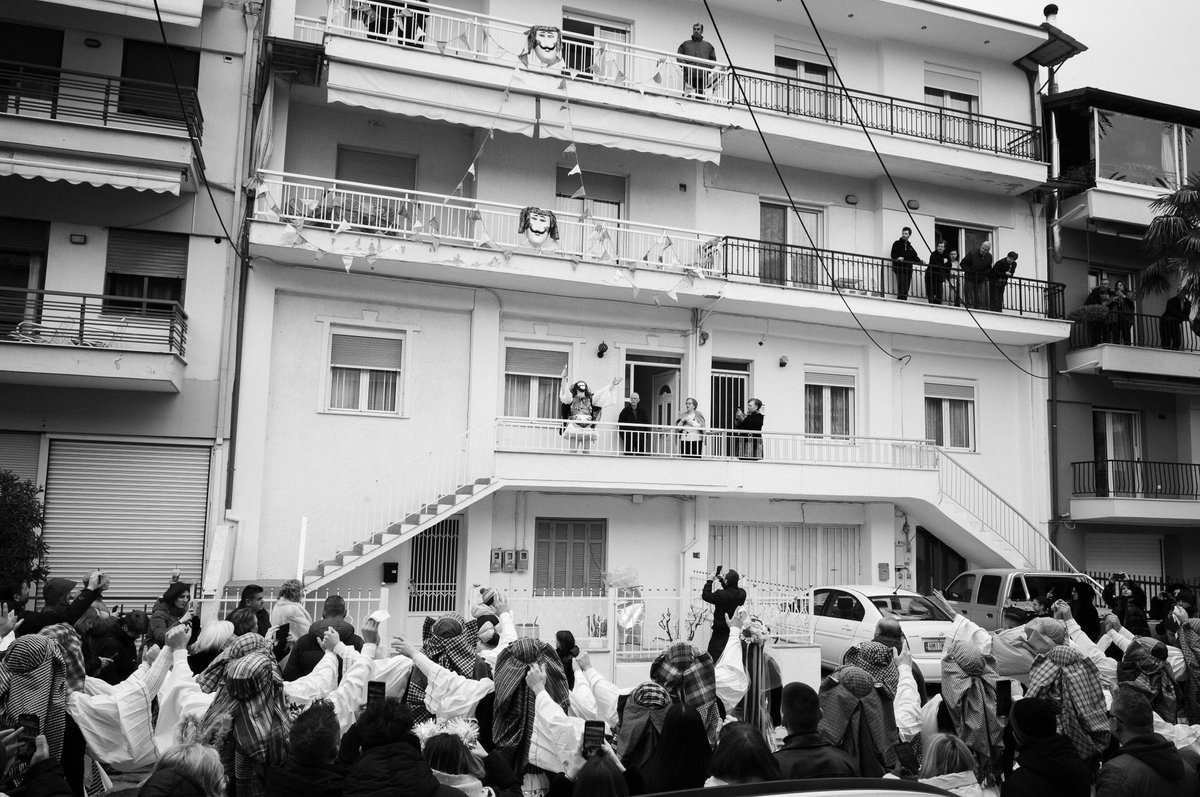
The tradition, known locally as “Boules or Genitsaroi,” is the heartbeat of Naousa’s Carnival festivities. Only young men participate, and even the role of the “bride-Boula” is taken on by a man, attired in a costume of broad, flowing garments adorned with floral headpieces and shimmering silver—a testament to the skill and care that goes into every detail. I learned that months before the event, families carefully curated expensive, sometimes even heirloom, clothing and jewelry for this day. The act of dressing for the ritual is itself a profound homage to both past and present.

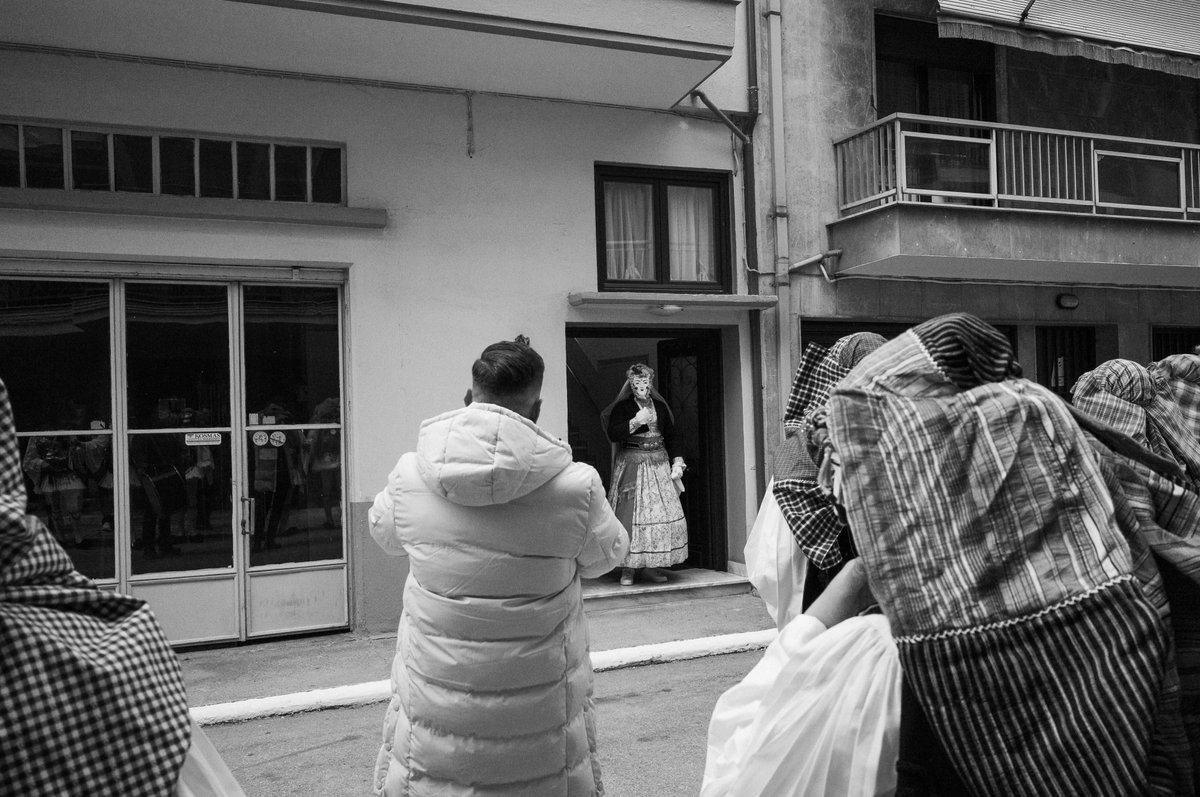
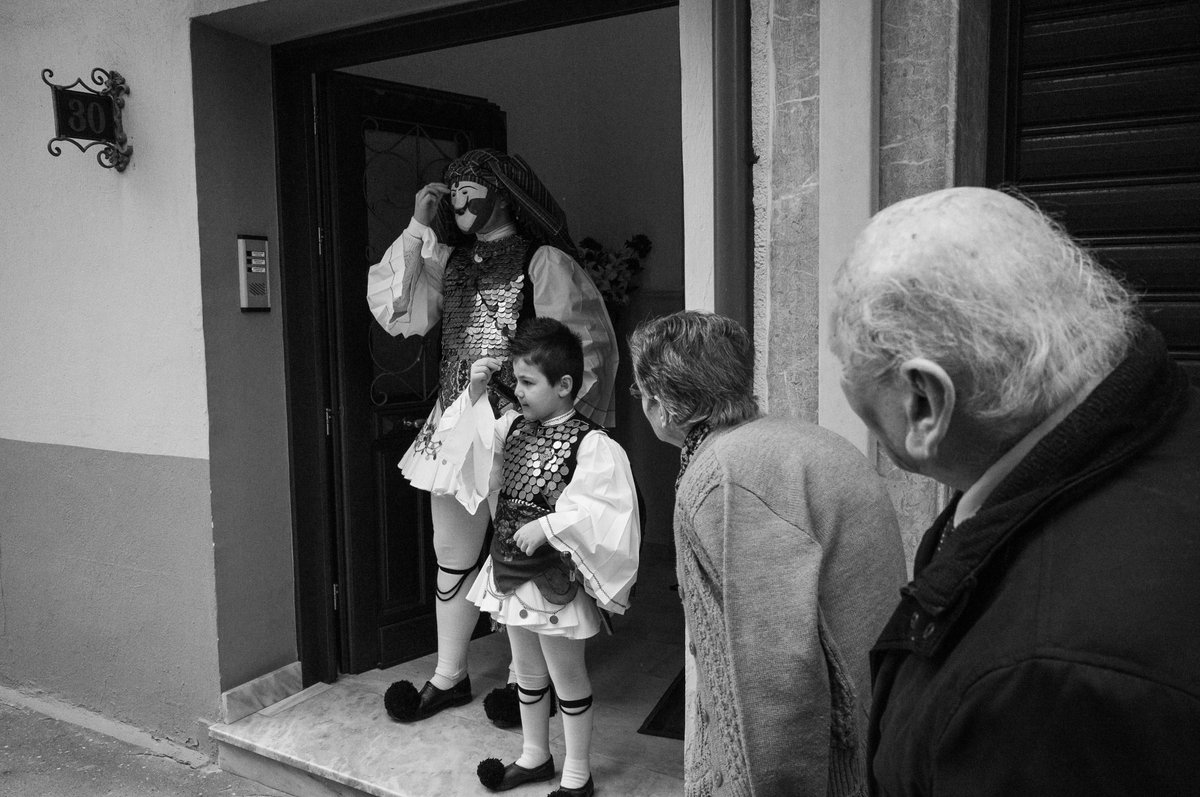
From City Hall to the Dance of the Streets
As the morning matured, the gathering moved to the city hall, where the ritual began with the mpoulouki leader presenting his credentials to the mayor. The zournas played Zalistó, and the Mpoules—paired dancers—leaned back with pride, striking the silver coins on their chests in rhythmic defiance. The νύφη-Μπούλα (bride-Boula), a central figure, moved gracefully, her bows honoring the earth. This tradition carries echoes of rebellion; during Ottoman rule, Mpoules would briefly reveal their faces to assure the Turkish ruler of their peaceful intent, while revolutionaries often hid beneath their elaborate masks.
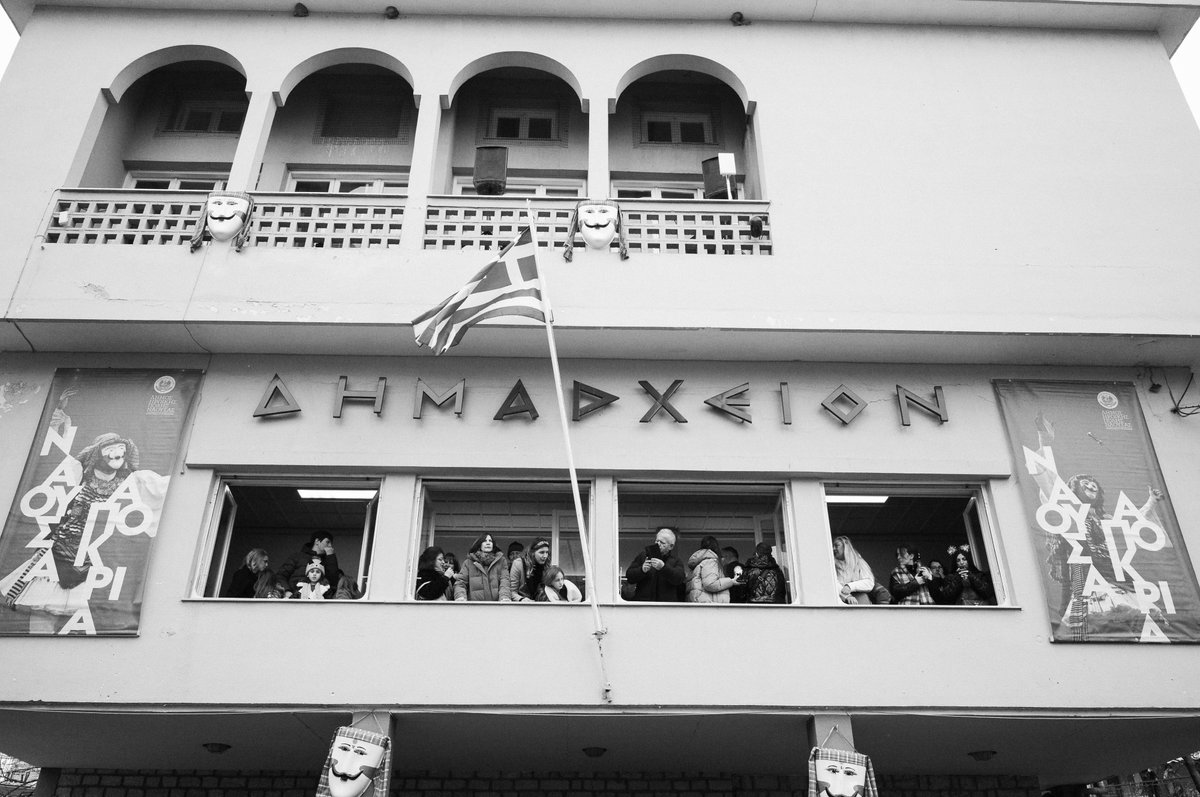


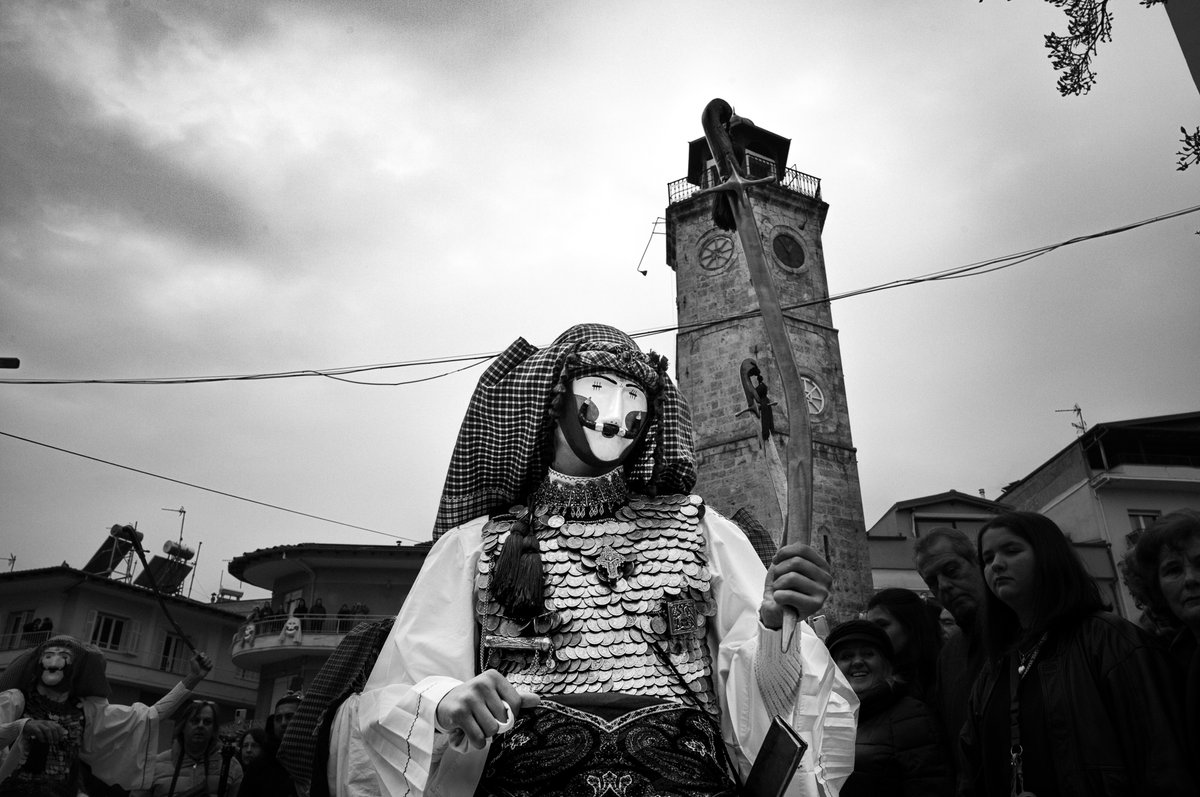
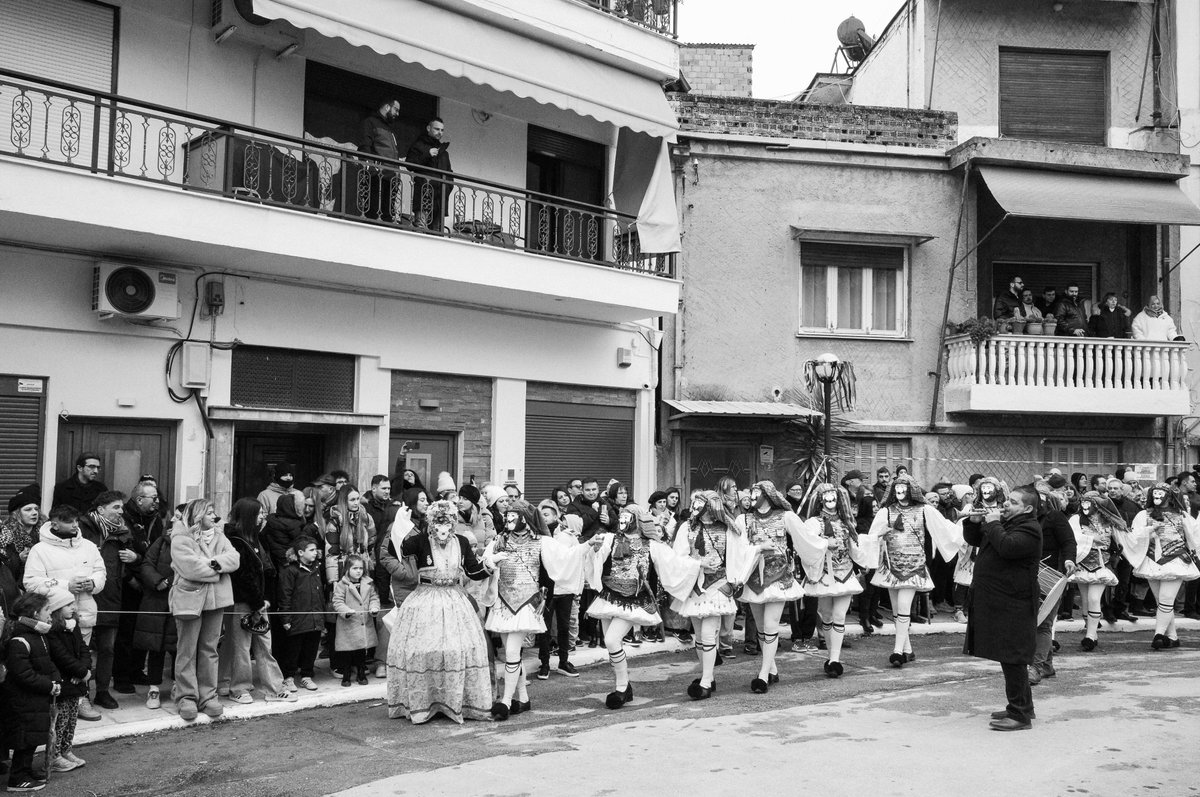
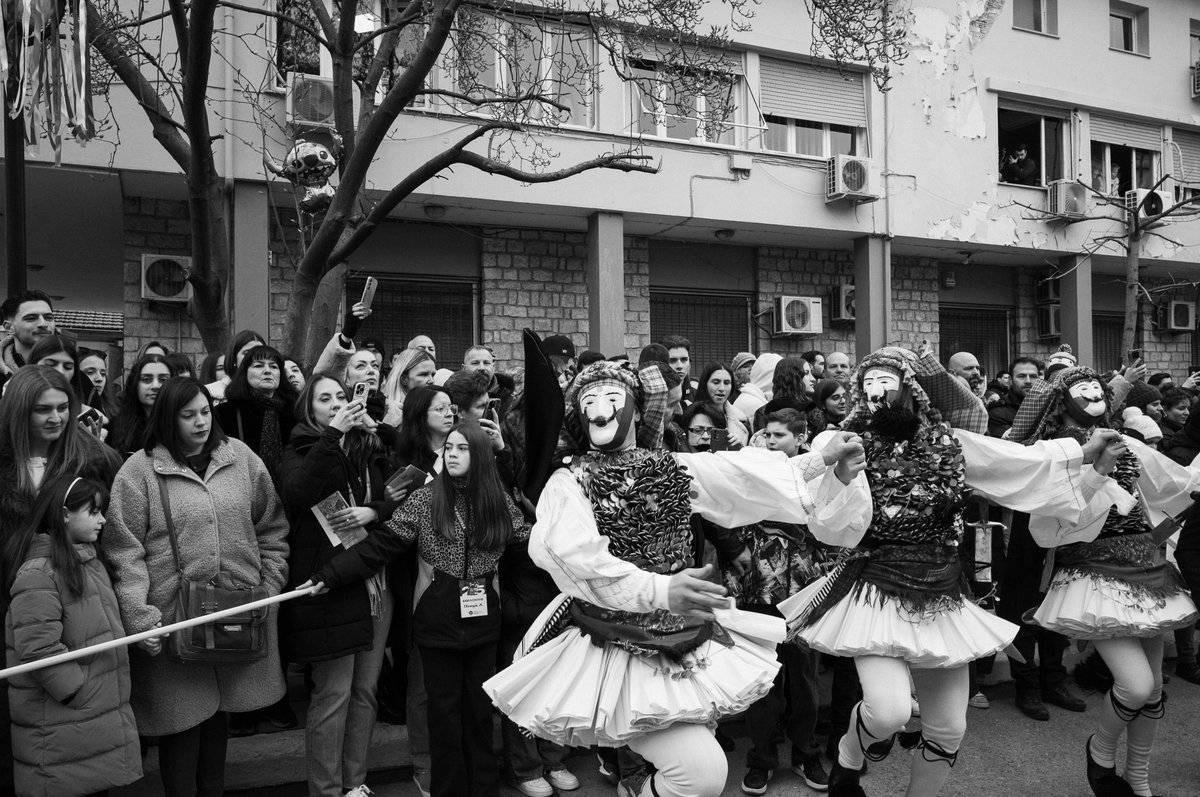
I joined the procession as we navigated the narrow lanes of Naousa. The route was punctuated by stops at seven significant intersections, with the numbers three and seven resonating with a quiet philosophical symbolism among the locals. At each triad, spontaneous yet ritualized interactions unfolded, reminding me how deeply embedded these customs are in the collective memory of the town.
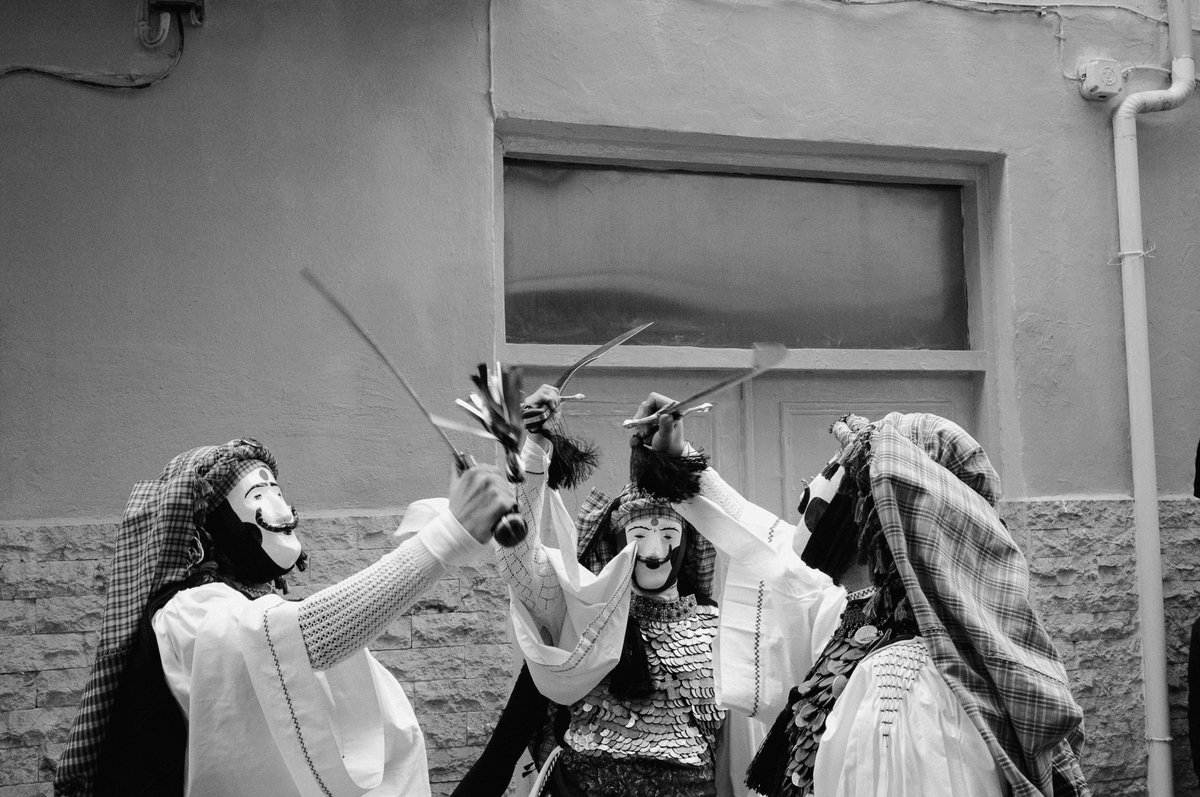
Faces Revealed
Arriving at the designated spot (Psila Alonia), I witnessed the poignant moment when the masks were finally removed. With faces revealed, the participants looked out to the city as if stepping out of a hidden past and into a shared present. This was not merely a festive act—it was an unfolding story of resilience and continuity, where every gesture, every musical note, carried the weight of history.
The Dance, the Music, and the Unspoken History
What followed was a procession that merged precise choreography with a celebration of life. The rhythmic calls of the daouli and the soulful strains of the zournades filled the air, guiding us through a series of dances with names as evocative as “Συγκαθιστός” and “Παπαδιά.” I observed with admiration as the dancers, including the specially designated “νύφη-Μπούλα,” moved with both grace and vigor. Their steps told a story—a narrative woven with hints of ancient initiation rites and the bittersweet memories of a town that once suffered greatly under foreign dominion.
I learned that during the Ottoman period, even as some participants concealed their identities behind complex headgear for safety, many carried within them the spirit of defiance—a quiet rebellion embodied in every dance step and every rhythmic clink of their silver ornaments. There was an undeniable beauty in their performance, one that transcended the mere act of celebration and spoke of a community’s enduring soul.
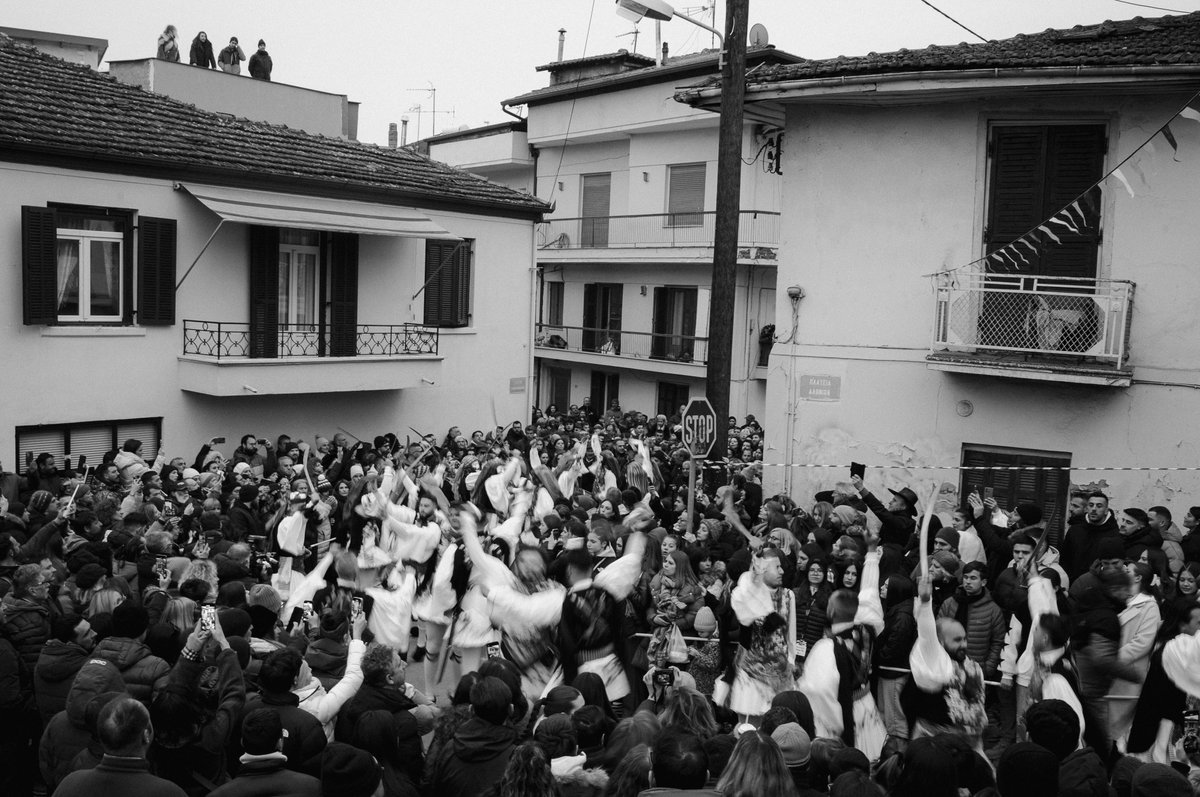
Evening Reflections: The Night of Unmasking and Togetherness
As the day drew on, the procession wound its way through various neighborhoods. With every new stop, the music and dance transformed; the formal ritual gave way to a more spontaneous, communal celebration. Neighbors and old friends joined in, their laughter mingling with the fading strains of traditional tunes. The moment when the dancers finally removed their masks was not an end but a release—a communal exhale after a long, meaningful performance.
By nightfall, after hours of dancing and heartfelt celebration, the mpoulouki slowly dispersed. As we all made our way back home—exhausted yet enriched by the day’s experience—I couldn’t help but reflect on the simplicity and depth of the tradition. In a world that often values spectacle over substance, here in Naousa, I found a living tapestry of memory, identity, and joy. For me, it was a reminder that even in the modern rush of life, there remains a space for rituals that honor our shared past and the quiet beauty of togetherness.
This journey in Naousa was a poignant reminder of how traditions, no matter how old or intricate, continue to shape our understanding of identity and belonging.
